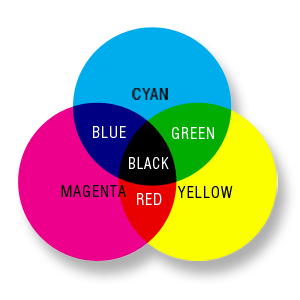Offset Printing Technology – Basic
Offset printing is the most commonly used method today, and has many advantages over other forms of printing, especially when we need high and consistent image quality.
This is a process used for printing on a flat surface, using plates.
An image is transferred to a offset plate which is chemically treated so that only image areas (such as type, colors, shapes and other elements) will accept ink.
Water and ink is applied to the plate.
Because of the chemical treatment, ink only “sticks” to the image areas, which reject the water.
Areas without images reject the ink.
The images with ink are transported then from the plate to the surface of blanket.
The task of printing blankets that are made of special multi-layer rubber is to convey the image or illustration to the paper and this is repeating on every cardboard that passes through the printing machine.
When we print full color job the cardboard is overprinted four times on four separate printing units with different colors.
Offset printing uses the process colour or four colour known as CMYK.
- ‘C‘ stands for Cyan (a colour in the blue/green spectrum),
- ‘M‘ stands for Magenta (a colour midway in the red/blue spectrum),
- ‘Y‘ stands for Yellow and
- ‘K‘ stands for Key (the black key plate).
Some of terms associated with this type of printing are:
Aqueous coating –
water-based coating that protects and intensifies the impression.
Impression (Printing) cylinder –
cylinder that presses the cardboard on the Blanket cylinder, and ensures the transfer of colors on the printed surface of cardboard.
Its rotation is the opposite direction of rotation of the blanket cylinder, so the two cylinders ensure the transport of cardboard between them and printing.
Color Management System (CMS) –
computer software package, created for the coordination of scanners, monitors, printers and printing machines, all with the aim of ensuring uniformity throughout the entire manufacturing process of printing.
Chromo Paper –
paper with wood pulp or rag paper coated on one side with water resistant coating.
Fountain solution –
A mixture of water and chemicals that is used for wetting offset printing plates and prevent the acceptance of color in the field without the ink.
Ink volume –
ink applied to the printing surface of the substrate.
The amount of ink is very important for achieving the desired impression, and depends on the raster.
Raster –
series of parallel lines, which defines the number of lines per vertical (unit: centimeter), the slope of the lines by generating roller (unit: degree angle).
Raster graphics are images digitally created as a set of samples of a given space.
A raster is a grid of X and Y coordinates on a display space.
A raster image file gives information which of these coordinates to illuminate in monochrome or color values.
Duplex board –
multilayered paperboard with gray intermediate layer, and gray back wood free coated on one side.
UV inks –
After the drop of UV ink is transported to the surface that is printed the UV light causes the polymerization of colors, making the ink hardens.
Color contains special chemicals, photo initiators, which accelerate the polymerization, which is why the ink is dry as soon as exposed to UV light.
Technology of offset printing is at a higher level than other printing techniques because of:
Long – lasting Excellent Quality End Result – different techniques present undetermined stage of quality, which is not case here.
Precise, clean and clear illustrations can be predicted just about with every printing job due to the reason that the fine layer of rubber adheres to the printing surface.
Fast and simple construction of printing plates.
Durability of Printing Plates – usually the plates in offset techniques lasts for a good amount of time for the reason that print surface and printing plate doesn’t come into straight interaction.
Investment – Offset printing is known as most inexpensive technique to create excellent quality printed product in industrial quantities.
Weaknesses of offset printing when compared to different printing techniques involve:
Time period Limitations – in case you have an urgent printing job , offset printing will possibly not provide a immediate service. It involves time and energy to set-up the printing machine. Also printing plates must be developed first before we put them on a machine. So better solution in this case is Digital offset.
Sensitivity of the plates – aluminum plates can become sensitive due to some chemical reaction and that leads to having print on non-image spots of the plate.
To some extent lower quality of printed product matched against rotogravure printing.


